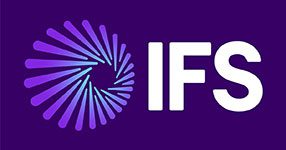
To get that agility and speed of delivery, IT is adopting a composable software architecture. Part of this is to put low-code and no-code tools in the hands of its employees so they are able to build the simple user applications they need by exposing back-end logic as APIs. But being composable is about far more than making it easy for employees to write apps.
What does composable mean for an enterprise?
Industry analysts Gartner defines the composable enterprise as “An organization that delivers business outcomes and rapidly adapts to business change. Think of it as building blocks made from applications to be assembled and rearranged as needed.”
Delivering business outcomes goes hand in hand with new experiences. Customers no longer want a product only engagement and this is where composable becomes powerful. It allows businesses to pivot around the expectations of customers quickly and with confidence. The time required to deliver a new experience is rapidly reduced. This creates what is called a Moment of Service. It places the emphasis solely on what the customer wants when the customer wants it.
But to get there requires a new approach to the software stack. It also means that data must become part of that stack as it is central to the services that a company can deliver. Some of the things a business needs to do are:
- Make its core software stack accessible: For a low-code initiative to work for employees, the entire enterprise development team must adopt that same approach; by looking at the core software stack, and think, “how do we expose this?”
- Focus on business outcomes: Setting multi-year goals for the business is how enterprises have functioned for decades. While that works, it is not dynamic, and a composable enterprise needs to be dynamic. Businesses must begin to look at their business models. How do they work? What do they deliver? Are they flexible enough to meet changing business needs?
- Support innovation: Enterprises like to think they are innovative. Often the opposite is true. Becoming a composable enterprise means adopting change. How do we pivot the business to new products and markets?
- Become technology-agnostic: Perhaps the biggest challenge for most enterprises is technology agnosticism. Too often, core applications are locked into a single vendor. This is because the underlying technology stack is not open. Moving to an open technology stack makes it easier to adapt the business for new challenges and needs.
- Create packaged business capabilities (PBC): Take core business functions and create PBCs around them.
- Integration: No application is an island. It needs data from multiple sources and to work with other applications. A strategy for integration is another part of being an open environment. It means the removal of silos by allowing data to be consumed where it is needed and by the right application.
What technologies does a composable enterprise use?
A composable enterprise is likely to use a core set of technologies. It includes:
- APIs: An API-first approach ensures openness, accessibility and standardisation. It is not about reverse engineering existing complex APIs. These need to be written from scratch with the right goals in mind. Those goals include the need to expose core business logic in a simple and easily consumed format.
- Microservices: These are small, self-contained pieces of business logic that can be quickly assembled into a larger service or an application.
- PBCs: A PBC consists of services, APIs, a data schema and other technology components that enable that business service. PBCs are building blocks that can be used to create other applications and services for the business.
- A Common UI: It delivers a consistent look and feel to users and developers. It reduces the need to constantly learn new ways to do things.
- Low-code, No-code: It is an approach that enterprise developers can use to create microservices, PBCs and applications quickly and easily. They utilise the APIs that expose core business logic and systems of record.
- Security: Security has to be baked in from the start. As APIs, microservices and PBCs are designed, security must be included. Adding security later does not work, and rewriting to manage security only creates a chaotic environment. Composable enterprises are secure by design, not secure by afterthought.
Empowering the user
For IT to fit the business, it has to work for the user. That means flexible architectures, no silos, and even giving users the power to create the applications they need.
But to get there, IT needs to rethink what it is delivering and how it is delivering it. The use of low-code and no-code tools by citizen developers is only really effective once the business begins to expose core logic through APIs. The same is true of data. That equally needs to be accessible to the user in a simple-to-consume format.
Beyond the APIs and data, IT also needs to be able to capture changing business processes. These are no longer defined by IT as it builds those monolithic applications. Instead, they are often created by the new applications users are building. To manage that, a composable enterprise needs to capture those new processes created as the user assembles an application.
Empowering the enterprise
Ultimately, the goal of becoming a composable enterprise is to enable new business models and the ability to continuously innovate. The process makes a business much more aware of what it is, what it wants to do and how it will get there. It also creates a software architecture that is robust and an IT environment able to meet demands from customers, suppliers and users.

























